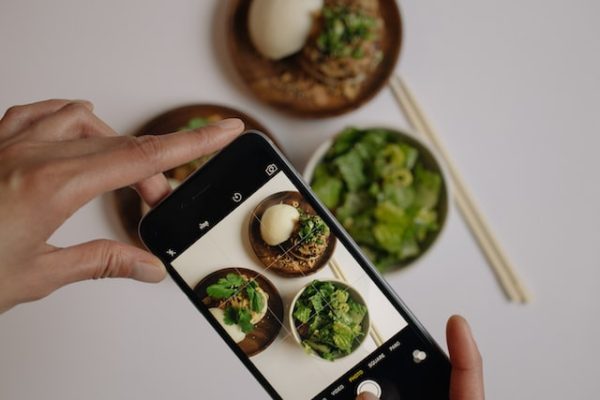“As soon as you trust yourself, you will know how to live” – Johann Wolfgang von Goethe
Intuitive eating is based on a mind-body integration of instinct, emotion and rational thought. It’s a subject I’m passionate about and my main focus when coaching is to help my clients tap into their intuition when deciding what food to eat, how much and at what time.
With so much conflicting information on nutrition, it’s easy to get lost in the process and feel even more stuck than when you first started out. The plethora of information is so conflicting because we’re all different. What suits one person doesn’t necessarily suit another so we embark on a journey of trial and error, following all sorts of different advice and our poor bodies have to endure the chaos whilst trying to maintain a delicate balance of bodily function. No wonder so many people present with stress-related conditions such as IBS, acid reflux, tension headaches and migraines, anxiety and depression. We need to find balance and we need to start looking inwards for that.
We all know a balanced diet is key for our health but we have different likes and dislikes, different tolerances and different needs, especially as runners, when our day to day needs vary depending on our training. One of the most common things I hear when I’m consulting my clients is that they eat a certain food, for example, broccoli because it’s healthy. When I ask them if they actually enjoy it, I often see a ‘nose turned up’ face and they tell me that no, they don’t really enjoy it. But the experts tell us cruciferous vegetables are good for us so we should eat them shouldn’t we? And my answer is, well that depends on you. In an IBS sufferer, broccoli can trigger painful cramps and bloating and if they continue to eat foods that cause this reaction, eventually they start to feel depressed and hopeless about what they can and can’t eat. So broccoli in this case would be distinctly unhealthy.
Following someone else’s plan can often leave you feeling hungry, frustrated, dissatisfied and mistrusting of your own body. So I have compiled a list of categories to help you choose foods that instinctively feel right for you and turn it into a healthy eating plan that’s just right for you. We need a good variety of food in our diet and it’s important to choose a few items from each category that look appealing to you for optimal nutrition.
Whenever you’re not enjoying what you’re eating – stop. Your body is telling you it’s not right for you now and it doesn’t need it. You are the expert of your own body. Following intuitive eating builds trust in your body.
Fruit and vegetables
A range of fruit and vegetables will provide fibre as well as an abundance of vitamins, minerals and antioxidants. Aim to choose at least one from each colour group.
Red e.g. tomatoes, raspberries, red peppers
Purple e.g. black grapes, blueberries, figs
Orange e.g. carrots, oranges, butternut squash
Green e.g. spinach, cucumber, fresh parsley
White e.g. cauliflower, mushrooms, fennel, onion
One portion equals (size of your fist or 80g)
- 3 heaped tbsp of cooked vegetables
- 1 cereal bowl size full of salad
- 1 handful of leafy greens e.g. spinach
- 1 medium or 7 cherry tomatoes
- 1 medium fruit e.g. apple or orange
- 1 handful of berries or grapes
- 1 small banana
- 2 small fruits such as plums or kiwis
- 1 inch slice e.g. melon or pineapple
Lean protein
Meat, poultry, fish, eggs, tofu and protein powder are all lean protein sources. Protein helps keep you feeling full and provides amino acids your body needs for growth and repair. Beans and lentils also contain protein but have significant amounts of carbohydrate and fibre too.
One portion equals (the size of your palm):
- 100g salmon, mackerel or fresh tuna
- 130g tinned tuna in springwater
- 150g white fish
- 150g shellfish
- 150g chicken breast
- 150g turkey breast
- 125g lean red meat
- 175g organic tofu
- 150g lentils
- 150g beans
- 2 medium eggs
- 25g brown rice protein powder
Essential fat
Fats are necessary to help your body produce hormones and enable you to absorb fat-soluble vitamins but the type of fat you eat is very important. Along with omega 3 fats found in high concentrations in oily fish, these contain predominantly omega 6 and 9 fats.
One portion equals:
- 1 tbsp of olive oil
- 1 tbsp coconut oil
- 50g olives
- 50g reduced fat houmous
- ½ medium avocado
- 20g almond, brazil, walnut or cashew nuts
- 20g flax, sunflower, pumpkin or chia seeds
- 20g almond or whole earth peanut butter
Complex carbohydrates
These are top of my list for maximizing performance and are ideal if you are training hard. These will help sustain you in endurance based activities and keep blood sugar levels balanced throughout the day.
One portion equals (the size of your fist)
- 50g jumbo oats
- 200g sweet potatoes
- 200g new potatoes
- 60g brown rice (dry weight)
- 60g quinoa (dry weight)
- 4 rough oatcakes
- 70g sourdough bread
Organic dairy and alternatives
It’s important to eat sources of calcium which have been proven to aid in fat burning and help build bone density but stick to organic and choose probiotic (bio live) yoghurt.
One portion equals:
- 150g natural probiotic yoghurt
- 40g feta
- 40g goats cheese
- 40g buffalo mozzarella
- 400ml plant based milk such as unsweetened almond milk
Intuitive eating disruptors
Here’s where the intuitive message gets skewed. Those clever food manufacturers know just how to create the perfect cocktail of ingredients and chemicals that excite our brains and pervert our taste buds with the absolute intention of making their foods addictive so we consume more. If you’re trying to tap into your intuition with these foods, it’s just not going to work. The natural cue is lost and hijacked by drug-like foods that confuse and mask your bodies true needs.
Intuitive eating disruptors include;
- Refined sugar
- Processed foods
- Caffeine
- Alcohol
It’s entirely possible that you can have some of the above items and still have a healthy eating plan but for many, and especially with refined sugar and processed foods, the internal message is clouded and there doesn’t seem to be an ‘off switch’ so I would recommend reducing or better, eliminating them to get back in touch with the intuition of your body.
The science
Skeptics may write off intuition as a matter of lucky guess work but scientists who study the phenomenon say it’s a very real ability that can be identified in lab experiments and visualized on brain scans. In meditators, brain regions associated with sensitivity to the body’s signals had more gray matter. The greater the meditation experience, the more developed the brain regions so I would highly recommend a daily practice. I’m a big fan of the Calm app from www.calm.com



